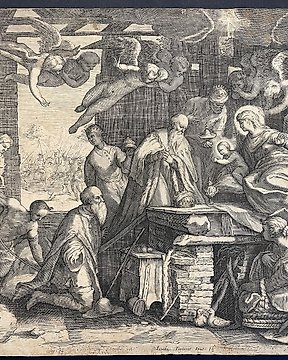
Jacob Matham (1571-1631), after Jacopo Tintoretto (1518-1594) - Adorazione dei Magi
N.º 30138869

N.º 30138869

1) Bar Weer
2) De Dijkpoort te Hattem
by: Jan Hillebrand Wijsmuller (1855 - 1925)
3) Drentsche Schaapskooi
by: Nicolaas van der Waay (1855)
4) Even Rusten
by: Ernest Sigismund (Ernst) Witkamp (1854 - 1897)
5) Leeuwen Studie
6) Marabout
by: Jan van Essen (1854 - 1936)
7) Na de maaltijd
by: Carel Lodewijk Dake (1857 - 1918)
All seven works appeared in: De Distel - 1886.
Jan Hillebrand Wijsmuller (Amsterdam, 13 February 1855 – there, 23 May 1925) was a Dutch painter.
Wijsmuller can be counted amongst the late the Hague School. He mostly painted landscapes and cityscapes, also made watercolours and etched.
He was a member of Arti et Amicitiae in Amsterdam and of the Pulchri Studio in the Hague.
Nicolaas van der Waay was a Dutch painter, watercolourist, draughtsman and lithographer. He worked from 1870 to 1936. He designed images for coins and stamps, including those of the still very young queen Wilhelmina.
Ernest Sigismund Witkamp studied at the national academy of fine arts in Amsterdam (1871-1877).
Witkamp was friends with Nicolaas van der Waay, with whom he shared a studio at the Koningsplein for some time. Witkamp, Van der Waay, Jan Hillebrand Wijsmuller, Carel Dake and several others formed the company M.A.B.
Johannes Cornelis van Essen was a Dutch graphic artist, illustrator and painter. He is known for the paintings and drawings featuring animals.
Carel Lodewijk Dake was a Dutch artist. He attended the national academy for visual arts in Amsterdam.
(Total: 7.)
Cómo comprar en Catawiki
1. Descubre algo especial
2. Haz la puja más alta
3. Paga de manera segura